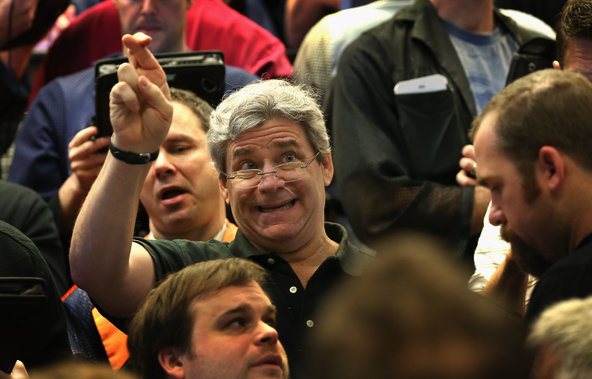JAKARTA — A wave of relief swept across Asia on Thursday after the Federal Reserve decided to maintain its pace of monetary stimulus, as investors and governments concluded that the financial environment for emerging markets would be less harsh than expected in coming months.
Currencies and stock markets across the region rose as short-term interest rates held steady in the United States and long-term interest rates actually dipped there, making it more attractive to put money into higher-yielding investments in developing countries for at least a few more months. Some of the biggest market increases took place in Indonesia, which has tended to be the emerging market most affected by Fed decisions over the years and the country hardest hit by traders over the past couple of weeks. The Jakarta stock exchange rose nearly 5 percent by midday, and the rupiah gained 2 percent against the dollar.
The Bank of Indonesia cautiously welcomed the Fed’s decision.
“For us, this is a short-term relief,” said Difi A. Johansyah, the bank’s chief spokesman and the chief liaison to Parliament and the rest of the Indonesian government.
“They reduce some of the pressures for capital outflows and reduce the pressure on the rupiah for the time being, but we have to work on our homework to stabilize the rupiah. The root of the problem is domestic, the current account deficit and inflation,” he said in an interview at the central bank’s headquarters seven hours after the Fed’s decision.
The Fed’s action also gave India some breathing room. The rupee was the worst performer of the world’s 78 internationally traded currencies in August but has started to recover this month. The Mumbai stock market increased 2.9 percent by midday, and the rupee climbed 2.4 percent against the dollar.
“If liquidity flows to emerging markets revive, those economies that have suffered the most — India, South Africa, Turkey, Indonesia and Brazil — stand to gain,” said Ajay Bodke, the head of investment strategy and advice at Prabhudas Lilladher, a brokerage firm based in Mumbai. “It also increases the maneuverability that the new Reserve Bank of India governor has in charting his medium-term course for the monetary policy.”
The new governor, Raghuram Rajan, a former chief economist of the International Monetary Fund and chief economic adviser to the Indian government, took office in Mumbai on Sept. 4 and plans to release his first statement and news conference on monetary policy on Friday. At his inaugural news conference on his first day in office, he stuck to banking deregulation.
Although India and Indonesia have attracted the most attention in recent weeks among emerging economies, other countries’ stock markets and currencies also rallied strongly on Thursday. The Hang Seng Index closed 1.7 percent higher in Hong Kong and the Nikkei 225 closed up 1.8 percent in Tokyo.
The indexes in Thailand and the Philippines rose more than 3 percent, and the S.P./ASX 200 index in Australia rose 1.1 percent. European stock markets also rose early Thursday. The FTSE 100 rose 1.4 percent soon after trading opened in London, and the main indexes in Germany and France rose 1.2 percent.
Among currencies, the Philippine peso and Korean won rose 1 percent against the dollar, while the Malaysian ringgit climbed 2.1 percent. The Japanese yen weakened 0.4 percent against the dollar as investors shifted money out of industrialized countries like Japan and back into emerging markets.
The big questions now are: How long a respite has the Federal Reserve taken before starting to taper its program of monetary stimulus, and how much damage may have already been done to emerging economies over the past several months by market volatility and capital flight? Most economists regard Fed tapering as inevitable, and still probable in the coming months.
The emerging economies facing the biggest challenges in recent months have been wrestling with broadly measured trade deficits equal to several percent or more of their annual output. They have relied until now on foreign investment to pay for these deficits as well as to finance interest payments on foreign borrowing, making them especially vulnerable to capital outflows that have reached tens of billions of dollars over the summer.
Falling emerging market currencies have also driven up the cost of commodities like oil that are priced in dollars.
“If the weakness of the rupiah lasts a longer time, it will create imported inflation,” Mr. Johansyah said.

Neha Thirani Bagri contributed reporting from Mumbai and Bettina Wassener from Hong Kong.
Article source: http://www.nytimes.com/2013/09/20/business/global/asia-optimistic-as-tapering-pushed-back.html?partner=rss&emc=rss



